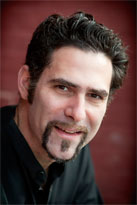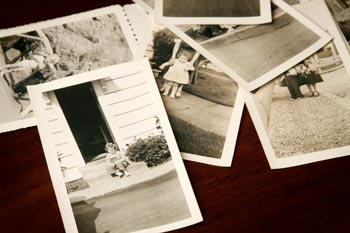Please welcome author Stuart Horwitz with a guest post on writing flashbacks.
“Flashback” is a term that we are all familiar with, even if its definition has grown a little vague. We sense that a flashback is something that happened before…but happened before what? Where we are now?
In other words, what are we flashing back from? This is where I think it is useful to introduce a companion term to flashback, the reading present. The reading present is the main narrative throughline, the most commonly visited time period, the one whose beginning and end most closely mirrors the beginning and end of the book as a whole.
There are good reasons to leave the reading present: by flashing back we can deepen characterization, create suspense, or introduce other characters and events that will eventually matter a great deal to our outcome. But there are also bad reasons to use flashbacks—not morally bad reasons, of course—just whoops-I-painted-myself-in-a-wicked-corner bad reasons.
To assist with this quandary, I offer the following five rules of writing flashbacks:
- The first rule of flashback is just that, when we flash back, we do so for a reason. And—get this—we reveal this reason to the reader. This reveal can be subtle, but readers need to be able to make some kind of connection to why we just went there or they will feel lost.
- We don’t leave the reading present for so long that readers lose their bearings upon our return. In other words, don’t fall in love with another time period and dally there, favoring it over the reading present. The reader will wonder if that is when your story really takes place, and perhaps everything else has been a flash-forward, which gets confusing (see rule #5). Readers need exactly one reading present. However the narrative is framed, wherever it jumps around to, the reader’s expectation is that they will be returned to the reading present in which they feel most at home to find out what happened.
- We don’t flash back for too short a time, such as a few lines or a paragraph, which is really more like presenting a memory. It’s better to stay in the reading present in that case and recount the past events through a character’s thoughts. When we do flash back, it should be for an entire scene, with all the benefits that a scene brings: dynamic action, a change in the state of affairs, development of the theme. This doesn’t mean a flashback should be only one scene; it can be longer provided readers aren’t lost upon their return (see rule #2).
- If you are going to use multiple timelines, present each timeline chronologically. Help a reader out: if we are flashing back from a throughline that takes place in 2002 to a throughline that takes place in 1993, make sure the events in 1993 take place sequentially: June, 1993 in one flashback; July, 1993 in the next flashback, October 1993, etc. We need to feel the narrative driving forward at all times.
- Flashbacks work, but flash-forwards don’t usually work. Flashbacks work because they correspond with our psychology: when we have a problem, we think back to an earlier time when something else happened, and then we figure out something about ourselves or our world (this is how therapy works, I think). Flash-forwards—jumping forward in narrative order—usually don’t work because the human psyche is not constructed that way. If someone asks about your past, you can discourse on it rather freely, even though you might end up changing the subject. If someone asks about the future, all but the most reckless souls will admit they don’t know yet.
For a great example of the reading present (or the viewing present, in this case) and some fabulous use of flashbacks, watch the film Slumdog Millionaire (aff link). The reading present here is the quiz show, Who Wants to be a Millionaire? The main character, Jamal, answers each question successfully, much to the surprise of all involved, by flashing back to specific events in his past and coming back to the viewing present with the correct response. There is even a third timeline—a lot to ask of today’s movie-going public—of Jamal being interrogated by the police. But it works because each timeline in presented in chronological order.
When we talk about flashbacks, the reading present, chronologies, and multiple timelines, we are talking about the general category called order, right? And I say that if we’re talking about order…then we might as well have some!
 About the Author: Stuart Horwitz is the author of Blueprint Your Bestseller (aff link). He’s the founder and principal of the editorial firm Book Architecture based in Boston, MA and Providence, RI. For over fifteen years, he has helped authors revise, polish and successfully publish their work. His clients have become New York Times bestsellers and have appeared on the Oprah Winfrey Show, The Today Show and The Tonight Show. An award-winning poet and essayist, Stuart has taught writing at Grub Street of Boston and Brown University. He holds Masters degrees in Literary Aesthetics from NYU and East Asian Studies and Medieval Japanese Buddhism from Harvard.
About the Author: Stuart Horwitz is the author of Blueprint Your Bestseller (aff link). He’s the founder and principal of the editorial firm Book Architecture based in Boston, MA and Providence, RI. For over fifteen years, he has helped authors revise, polish and successfully publish their work. His clients have become New York Times bestsellers and have appeared on the Oprah Winfrey Show, The Today Show and The Tonight Show. An award-winning poet and essayist, Stuart has taught writing at Grub Street of Boston and Brown University. He holds Masters degrees in Literary Aesthetics from NYU and East Asian Studies and Medieval Japanese Buddhism from Harvard.





Stuart Horwitz,
Nice list of considerations (I’m allergic to the word “rule”) for constructing flashbacks. I’ll add a link to it on my wiki page for Flashback. One thing I’d like to add / ask your thoughts about is flashbacks as story framing mechanism, which would run counter to #2.
Thanks,
Fritz.
Great question, Fritz! And I hear you about rules…but I say knowing the rules can then become occasion for breaking them, you know? Anyway, a frame like the one you are talking about (like the one that opens the movie, Titanic, for example) should be called just that, I think: a frame. It’s not like that whole movie is a flashback; the reading (or viewing) present exists on the boat. So the frame in essence is a flash-forward…but one that works! Hope this helps~~
You did a great job of clarifying the pros and cons of a sometimes messy literary device. I remember once when reading a book the author flashed back for so long that when we returned to the present, I had forgotten the important plot points!
Exactly Karoline! And I know the past illuminates the present illuminates the future, but subconsciously we always need one of those timeframes to equal our now. Don’t know the neuroscience of it, but we do!
Hi Stuart,
This post is helpful to me both as a writer of fiction and as an editor of fiction.
Although flashbacks can be brilliant if done correctly, I have two pet peeves about messy flashbacks. First, I dislike it when the author launches into a lengthy flashback every couple of pages. It feels like the story never has the chance to get its traction in the “here and now.”
Second, I dislike flashbacks that don’t give the reader any information that couldn’t be conveyed with a brief statement.
Thanks for taking on this challenging topic.
Best,
Debra
Hi Debra,
I agree with you about flashbacks every couple of pages. I’m sure it can be done well, but it’s usually just jarring and confusing, and it causes the reader to disconnect with all timelines. I feel the same way about unnecessary flashbacks, but then again, I think everything in the story should be necessary to it and should be as concise as possible. For example, we don’t need a five-page flashback to show us that a character received a family heirloom as a gift from her beloved grandparent. However, if the flashback is packed with details that help us better understand the present storyline, then the five-page flashback is warranted! I’m trying to avoid flashbacks altogether. In a first-person narrative, I prefer to have the narrator explain things to the reader directly: My beloved grandparent gave me that family heirloom. There! Done!
Thanks!
I love flashbacks when they’re done well. Brandon Sanderson uses them a lot in his epic fantasy series The Way of Kings. It’s totally amazing as the flashback chapters weave Kaladin’s past story and bring the reader to why and where he is in the book’s present day–and when you find out it’s like getting socked in the gut.
It’s funny because I love flashbacks and flash-forwards in film and TV (I’m a die-hard LOST fan), but I think they’re tricky to execute well in writing. Stuart has offered some wonderful insight on writing flashbacks. As I said in another comment, I’m trying to avoid them in my writing, but this post tempts me to experiment with them a little.
I agree! A great flashback can make everything come together in a unique way… A poorly done flashback just makes you go, “Wait, what?!?..”
Hi Stuart, really enjoyed this post. I’m enjoying the blog overall, in fact. This was a great overview of the benefits and shortfalls of using flashbacks. I’ve recently started up a blog as part of my creative writing degree and I’m looking for other bloggers to guest post for and network with, would this be something you would be interested in perhaps? I’m over at http://www.olidnejad.com, thanks and all the best!
Thanks! You’ll find that most blogs that accept guest posts now have a submissions page of some kind. The submissions page for this blog is accessible under the “Blog” link at the top of the page — hover over the word “Blog” and you’ll see it. One tip I would offer on guest posting is to make sure you familiarize yourself with a blog before submitting. Make sure you get a good idea of the level of writing, topics, etc. Good luck to you!
Thanks for pointing me in the right direction Mellisa, 🙂 I’ll spend a few months following the blog to get a feel of things before writing for submission. I really appreciate all of your help, all the best, Oli
Great post. I notice that soap operas are using flashbacks to reintroduce old characters and past story lines. When done well blends perfectly current characters and story lines.
Right! If it was really memorable, Melody, the chances of something (a character, an event, a symbol) being recoverable in this way are greater: which is why all narrative information has to be presented dramatically–in scene–in the first place!
I think flashbacks are used in all forms of storytelling. I don’t watch soap operas, but I can’t think of a TV show I’ve seen that didn’t use flashbacks at some point.